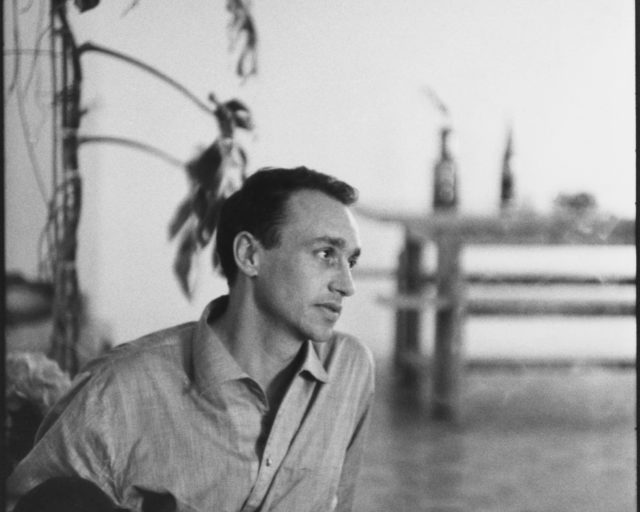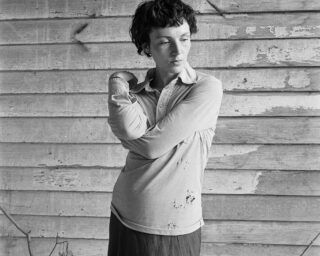Editor’s Note
Jane Mount, Ideal Bookshelf #968: Denise Wolff
The essential goal of publishing is to make public. But when publishing photobooks, who do we consider our public to be? This is a question I ask myself a lot in my work as an editor: who is this project for and how do we reach them? What many would consider a photobook, those who read this publication might not recognize as such.
As I write this, the top “Photography & Video” book on Amazon is Pumpkin: The Raccoon Who Thought She Was a Dog (2016). The title says it all. A wall calendar is also available! Also in the top ten is a book called People Knitting: A Century of Photographs (2016)—another book whose topic is self-evident and which, I must admit, I’ve added to my cart. Meanwhile, on photo-eye, the top-seller this week is Ron Jude’s Vitreous China (2016), which I bought at the New York Art Book Fair and recommend highly. It is a lovely, unassuming object—delicate, saddle-stitched pages, contained in a gray paperboard clamshell box—with Jude’s pictures of industrial areas in midwestern American cities, accompanied by raw, moving text vignettes by Mike Slack. It was printed in an edition of 375 copies. photo-eye’s other top-sellers include some self-published titles. This snapshot comparison between Amazon and photo-eye reveals that our community exists worlds apart from the greater public. We live in our own photobook bubble.
I may be inside that bubble, but I am also interested in how to make photobooks public, and reach a wider audience. My first experiences of photobooks were the books about life under the sea that we had around the house because of my grandfather’s interest in diving. (In fact, he was the inventor of saturation diving.) As a child, I loved entering the underwater world of corals, sharks, and shipwrecks. I also vividly remember when my mother brought home A Day in the Life of America (1986), and how captivated I was by the different lives and livelihoods across my country, all captured in a single day, morning to night. These mass-market and special-interest books probably shaped my abiding interest in photography more than The Americans did. As a student, another early favorite of mine (a “real” photobook) was Eggleston’s The Democratic Forest (1989)—given to me by a friend, Darius Himes, when I was first learning photography. I was astonished to discover that anything could become subject matter for the camera. These first loves continue to impact what I commission for Aperture now—books like The Open Road: Photography and the American Road Trip (2014), The Photographer’s Playbook (2014), and the forthcoming Feast for the Eyes: The Story of Food in Photography (2017). I hope they reach not only the photographic audience, but also a wider public, allowing them to encounter and engage with photography.
This issue is about the accidental photobook— books that use photos, but are not generally awarded the status of photobook proper. As we were putting it together, I discovered that almost everyone in our community had a favorite book in this category that they were eager to share. I am delighted that these humble, unlikely photobooks share these pages with the Paris Photo–Aperture Foundation PhotoBook Awards shortlist, reflecting the kind of divide I describe above. I hope this collision reminds us how democratic, how generous, how expansive both the medium of photography and the form of the book really are. Enjoy.
Denise Wolff is a senior editor at Aperture. Some recent books she has commissioned include The Photographer’s Cookbook (2016); The Photography Workshop Series books; and Seeing Things (2016), a children’s book by Joel Meyerowitz.
Jane Mount (illustration) makes things for people who love books. idealbookshelf.com
Image credit: Jane Mount, Ideal Bookshelf #968: Denise Wolff


























